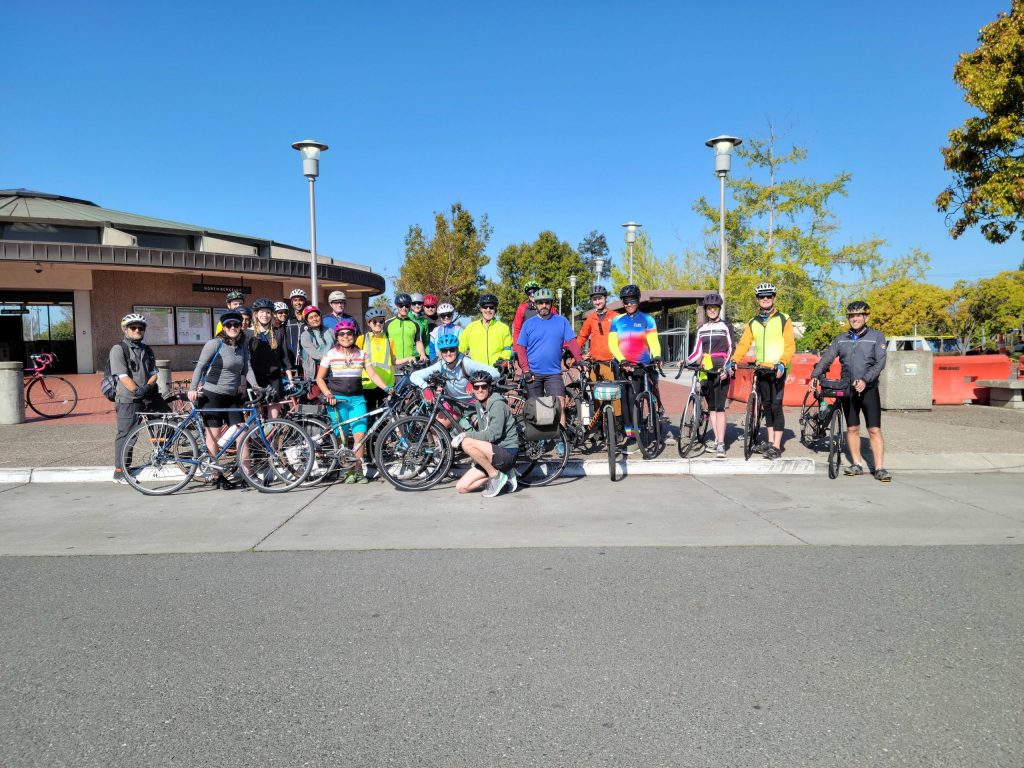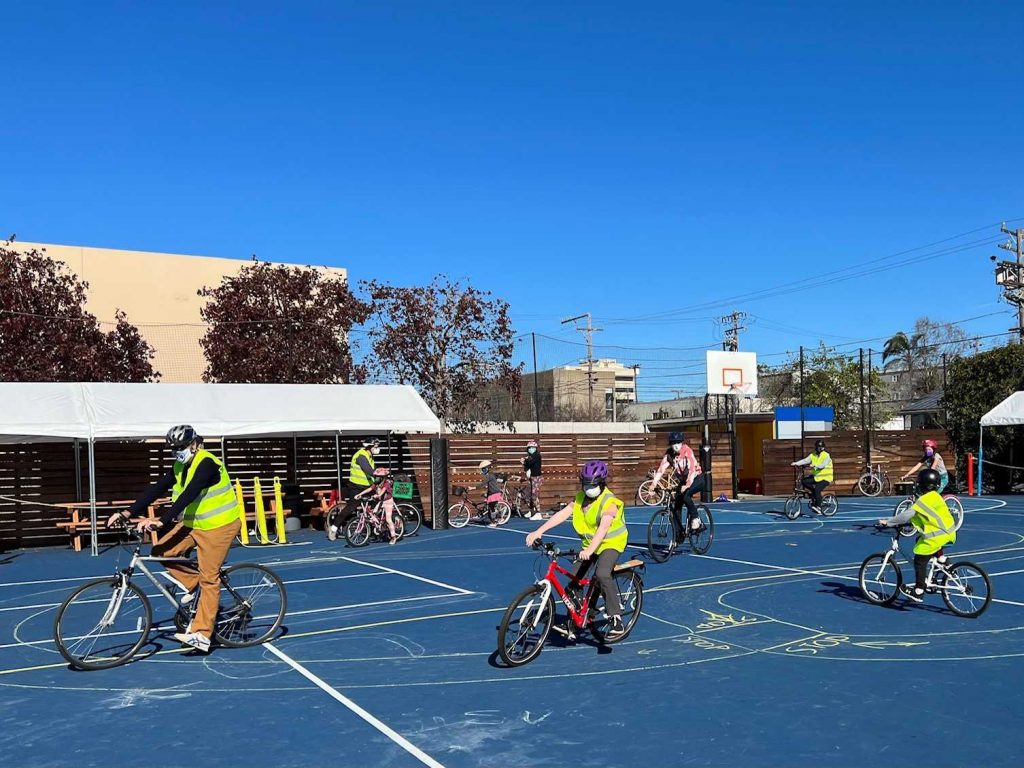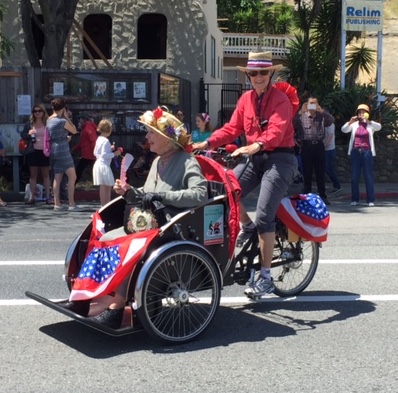
A spring ride event organized by Bike East Bay.
During the pandemic, people hopped on bicycles for sanity and recreation. Local bike shops struggled to meet demand, and Bay Area communities closed streets to car traffic to make it safer for bike riders.
As the pandemic improves and more Bay Area companies call employees back to the office—at least a few days a week—transportation officials and bike advocates hope to harness the huzzahs for cycling. There are growing options for all ages and abilities, from traditional pedal bikes to electric models and trishaw rides for older adults. There also are new ways to participate in bike policy at the community level.
Consistent with ongoing bike policy efforts, officials want to foster permanent travel adaptations that minimize car reliance. California, recently named the fourth most bike-friendly state, aims to reduce automobile vehicle miles traveled (VMT) by 15 percent by 2050 to achieve its greenhouse gas reduction goals.
Bay Area biking is becoming easier due, in part, to infrastructure investments in safer streets and connected bike networks. For example, the Sonoma Marin Area Rail Transit District is preparing for more bike and pedestrian paths along its tracks. And in Oakland, there are new protected bike lanes on Telegraph Street—a core Vision Zero approach—and proposals to add more along Fourteenth Street downtown.
Yet as improvements take shape, it’s hard to quantify what bike commuting will look like in the near term, even as electric bikes gain market share and lending programs and other incentives aim to change travel behavior.
“We’re still trying to figure it out, too,” said Shiloh Ballard, executive director at the Silicon Valley Bicycle Coalition (SVBC). “COVID happened, everybody sheltered in place, and one of the few things you could do is ride a bike…but it was different. People weren’t riding to work anymore. They were riding for recreation and sanity.”
SVBC and the Bay Area’s other county bike coalitions work on programs and policies to make biking a go-to transportation option in May, National Bike Month, and beyond.

A family cycling workshop organized by Bike East Bay.
Bike Month
The League of American Bicyclists established National Bike Month in 1956 to showcase the benefits of bicycling for all ages and advocate for infrastructure and safety. Although, the Bay Area’s Metropolitan Transportation Commission put a new spin on the month in 2020 and recast it as Bike to Wherever Days to recognize home-based work patterns.
As part of this year’s events, Bay Area Bike to Work Day returns Friday, May 20 after a three-year hiatus with swag-and-snack “energizer stations” throughout the region for anyone en route to work or on a morning ride.
During May, county bike coalitions also offer activities and classes for adults and teens learning to ride and those looking to pick up urban cycling skills, among other interests. Each county also chooses a “Bike Champion of the Year.” This year’s winners, who range in age from 19 to 85, said bicycling is their primary transportation because it provides ease, independence, and community connection.
“This is what we’re hoping programs like Bike to Wherever Days and Bike Month lock into place, and that is how do we make sure people don’t default to the car as we emerge from COVID-19?” Ballard said.
Advocates stressed the importance of exposing youths to bike riding through investment in Safe Routes to School programs. Data show that when you ride a bike as a child and continue riding through as a teen, you are more likely to ride as an adult. Advocates also champion walking, micro-mobility options like scooting, and the use of public transit because biking isn’t always feasible for some people.
“I’m veering away from bike commuting because I’m pregnant…and hope to return to bike commuting as our child grows and we can bike together,” said Maggie Chestney, San Francisco’s Bike Champion of the Year in 2018.
New options are unfolding for individuals who aren’t physically able to pedal a bike via an organization called Cycling Without Age. It operates in Marin and Alameda counties, and San Francisco and San Jose. Its “pilots” pedal electric-assisted trishaw bikes that transport up to two passengers to community events or on recreational rides.
“I got the equipment in 2015, so I’ve been doing events and working with a couple of nonprofits since that time, providing mostly recreational opportunities,” said Cheryl Longinotti, a Marin County trishaw pilot.

Cheryl Longinotti piloting a trishaw during a pre-pandemic Memorial Day Parade in Mill Valley.
Bikes and Beyond
For those seeking encouragement to ride, advocates urge people to pledge to cycle through their respective county coalitions.
“We want to promote biking and talk about how it’s a popular mode of transportation and a source of joy for families and kids,” said Teo Octavia Saragi, communications manager at Bike East Bay.
And you don’t need to don spandex.
“People see expensive, flashy gear and think that’s the way you have to look to bike, and it’s just not the case,” said Tarrell Kullaway, executive director of the Marin County Bicycle Coalition.
Click here to learn more about Bike Month and organizations behind the movement. Advocates suggested residents connect with local bike groups to get involved in the public process affecting programs and projects in their area. For example, MCBC just launched “Local Teams,” modeled after SVBC’s program, and is looking for volunteers in San Rafael to assist with bike infrastructure advocacy and policy goal setting.

